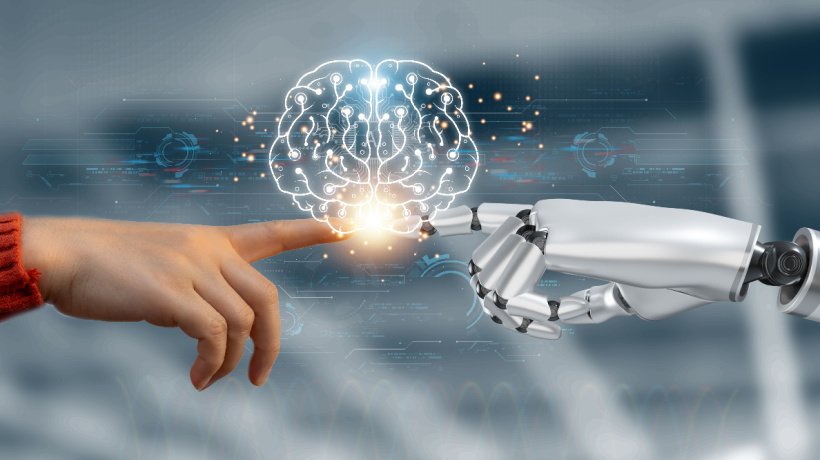AI: Friend Or Foe To The Instructional Design Industry?

The Rise Of AI In Instructional Design: Impact, Challenges, And Opportunities
Artificial Intelligence (AI) is no longer a futuristic concept; it’s here, making waves across various industries, including Instructional Design. Whether you’re in education or corporate learning, AI’s influence is undeniable. LinkedIn frequently features discussions and updates on AI advancements and their implications for Learning and Development (L&D).
In recent years, AI products like IBM Watson, Coursera, and Duolingo have gained significant traction globally. These platforms leverage AI to provide personalized learning experiences, real-time feedback, and adaptive learning paths. But what does this mean for Instructional Designers? Are they welcoming AI as a friend, or viewing it as a potential foe?
Key Areas Of Transformation With AI: What Does It Mean For Instructional Design?
AI In Education: Enhancing The Learning Experience
In the education sphere, AI is transforming how students learn and how educators teach. Platforms like Coursera use AI to tailor courses to individual learning styles and paces. This personalized approach ensures that students are neither overwhelmed nor under-challenged, creating an optimal learning environment.
Moreover, AI can handle administrative tasks, giving educators more time to focus on teaching. For instance, AI-driven chatbots can answer common student queries, grade assignments, and even provide feedback. This efficiency not only improves the educational experience but also supports teachers in managing their workload more effectively.
Corporate Learning: Boosting Efficiency And Engagement
In the corporate world, AI is revolutionizing training and development. Companies are increasingly adopting AI-driven platforms to enhance employee Learning and Development, where AI is being used to create customized learning experiences for employees, aligning training programs with individual career goals and company objectives.
AI’s ability to analyze data and predict trends is particularly beneficial in corporate learning. It helps identify skills gaps, recommend training programs, and track employee progress. This data-driven approach ensures that learning is relevant, targeted, and impactful. Moreover, AI can enhance engagement by making learning interactive and accessible anytime, anywhere.
The Double-Edged Sword: Job Security Concerns
While AI offers numerous benefits, it also raises significant concerns, particularly around job security. Instructional Designers (IDs) are apprehensive about AI potentially automating tasks that were traditionally human-centric. This fear is not unfounded, as there have been instances where AI implementation has directly impacted job roles.
For example, in 2022, the University of Central Florida implemented an AI-driven grading system to manage the increasing workload of large classes. This system, designed to grade assignments and provide feedback, led to a reduction in the need for adjunct faculty who were previously hired to manage these tasks. Although the AI system improved efficiency and consistency in grading, it also caused unease among faculty members who relied on these positions for income and experience.
Another instance occurred in a global tech company that adopted an AI-based content development tool in 2021. This tool could create training materials, design eLearning modules, and even generate interactive quizzes. As a result, several junior Instructional Designers were laid off, as the AI tool could perform their tasks more quickly and cost-effectively. The remaining staff had to shift their focus to higher-level strategic planning and innovation, which required a different skillset.
These examples illustrate the potential for AI to disrupt traditional roles within Instructional Design. However, it’s essential to note that while AI may take over routine tasks, it also opens up opportunities for IDs to engage in more creative and strategic work. A study from the International Journal of Artificial Intelligence in Education (2021) highlighted that AI could potentially create more jobs in the education sector than it displaces. By handling repetitive tasks, AI frees up Instructional Designers to develop more innovative and effective learning experiences.
The challenge lies in adapting to this new landscape and acquiring the skills to work alongside AI. Instructional Designers must embrace continuous learning and professional development to stay relevant and leverage AI to their advantage.
Real-World Impact
A multinational corporation implemented an AI-driven learning platform to upskill its workforce in response to rapid technological advancements. Initially met with resistance, the platform soon proved its worth. Employees found the AI-generated training programs highly personalized and relevant, leading to increased engagement and skill acquisition. The Instructional Design team reported that AI tools saved them countless hours in content development and analysis, allowing them to focus on strategic initiatives. This successful integration of AI not only improved learning outcomes but also demonstrated the potential for AI and Instructional Designers to work in harmony.
Embracing The Future: Collaboration Over Competition
The key to thriving in an AI-enhanced Instructional Design landscape is collaboration. AI is a powerful tool that, when used effectively, can amplify the impact of Instructional Designers. By automating routine tasks and providing data-driven insights, AI enables designers to focus on creating innovative, learner-centric experiences. For example, AI can handle administrative tasks such as scheduling and grading, allowing Instructional Designers to dedicate more time to developing interactive simulations and personalized learning paths that engage and motivate learners.
Becoming part of digital communities is a great way for Instructional Designers to share insights, learn from peers, and stay updated on AI trends. Engaging in these communities can help designers understand how AI is being used and how they can leverage it in their own work. For example, by participating in groups focused on AI in education, designers can discover best practices for integrating AI tools into eLearning modules, learn about the latest AI-driven analytics platforms, and connect with other professionals who have successfully implemented AI solutions in their Instructional Design projects.
Conclusion
So, is AI a friend or foe to the Instructional Design industry? It’s clear that AI is a friend, but like any friend, it requires understanding and adaptation. The benefits of AI in enhancing learning experiences, boosting efficiency, and providing data-driven insights are substantial. However, the industry must address job security concerns and ensure that professionals are equipped with the skills to work alongside AI. Instructional Designers must learn best practices for integrating and coordinating with AI because AI isn’t going away. Engaging with AI effectively can turn potential challenges into opportunities for growth and innovation within the field.
AI’s role in Instructional Design is not about replacement but enhancement. By embracing AI and leveraging its capabilities, Instructional Designers can create more impactful and innovative learning experiences. The future of Instructional Design is bright, with AI as a valuable ally.







